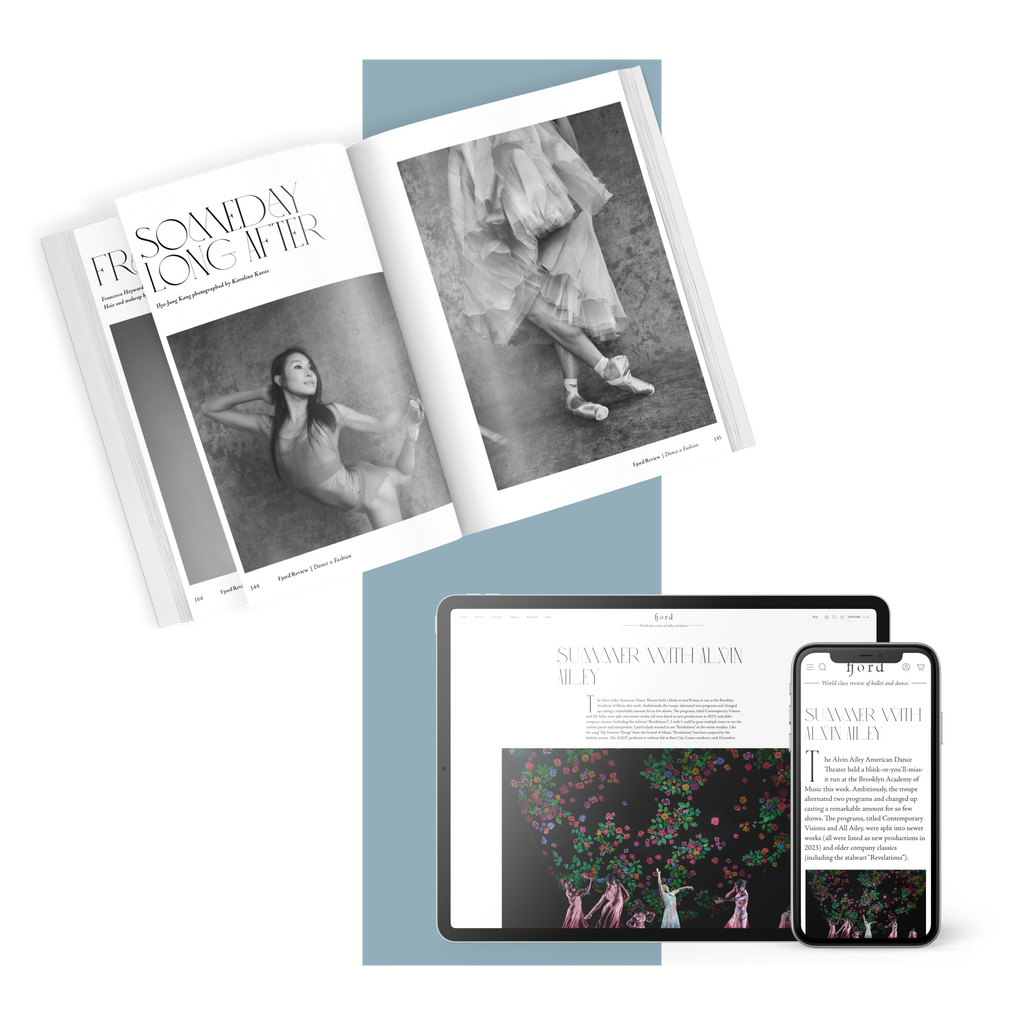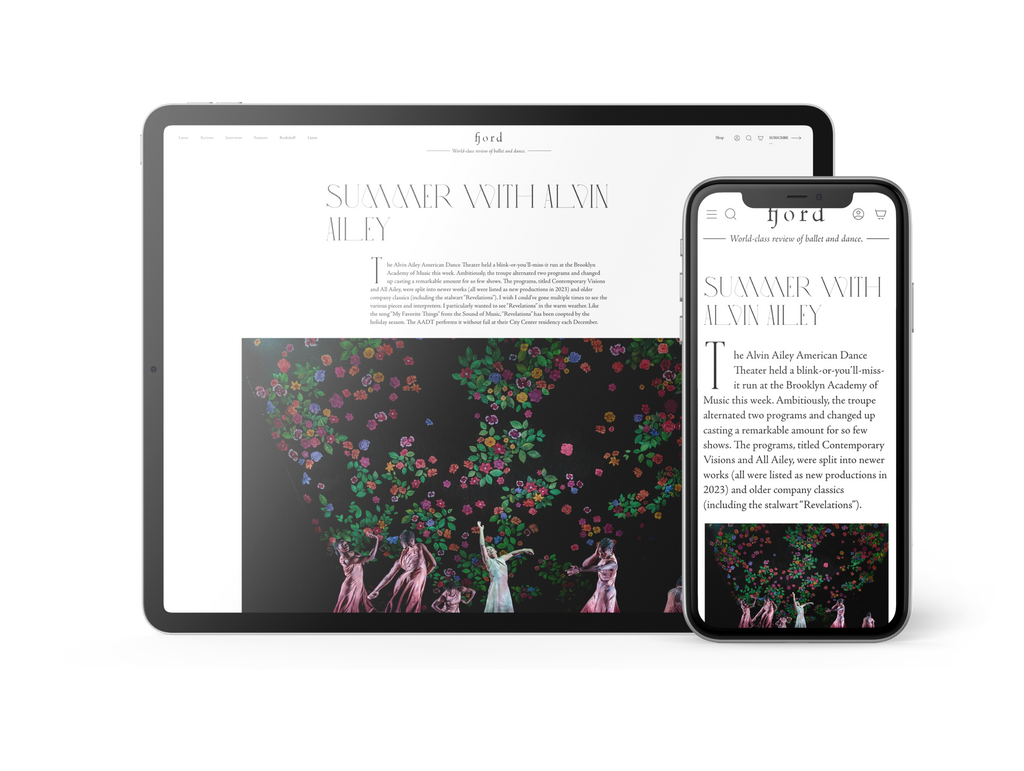Hart set “Camille” to Shubert’s “Death and the Maiden” string quartet (recorded, unfortunately, though the dancers still consumed it as though it were food) and edited the plot to essentials: Camille Claudel, a sculptor, was a mistress of Auguste Rodin; she had a mental breakdown, destroyed much of her work, and was committed to institutions for the latter part of her life. The cast of seven included Oren Porterfield as Camille, Edward Carr as Rodin, and Bailey Anglin as Rose, Rodin’s wife, plus four versatile “sculptures” who at times were manipulated at the whims of the main characters and at other times shadowed, glossed, and interlude, fleshing out the work like a Grecian chorus. Spare costumes by Magdalena Jarkowiec and lighting by Steve Myers created a fluid palette of pale earth tones, roses, and grays, immersing the story in the clay itself.
Though streamlined in presentation, this story ballet was robust in lineage: the chorus, the love triangle, the mad scene, catharsis, tragedy—they were all there! The dancers (most of them Ballet Austin artists on summer leave), in soft shoes and socks, moved as though through slip: uncertain, soft, grounded, viscous. When Porterfield, whose dark-eyed intensity found a match in this role, kicked over the human sculpture-chorus, her torment was a dagger to the heart. For those who have wondered whether ballet is dead, or (as I’ve wondered myself on occasion) dead to them, I stand, teary-eyed, hand to heart, and suggest this ballet.
The three works that preceded “Camille” had other valuable offerings. Hart’s “Spaces,” the opening work, was a contemporary quartet for four women, set to moody, atmospheric electronica by Nils Frahm, in which flat-palmed, outstretched arms and precise engagements met with raw edges when the dancers slid across the floor in second position and skidded, a touch unpredictably, to a stop. In the third work, “Hoaxers,” part of a transmedia work-in-progress choreographed by Erica Gionfriddo and Curtis Uhlemann for their high-tech dance-theater company, Arcos Dance, humanity and digital technology collided, merged, fractured, regrouped. With a cast of six and several laptops, sophisticated videos and projections by co-director Eliot Gray Fisher, and voice paired with digitally created sound, the excerpt blurred boundaries between physical and digital presence.
I’ve saved the second work on the program for last because it has taken on new resonance since the mass shooting at a Florida gay club on June 12. The program notes for “Glitter Garden,” a solo choreographed by Larry Keigwin for Nic Lincoln, an independent dancer based in Minneapolis, Minnesota, explain that Keigwin and Lincoln share a background in the club scene—no doubt a background also shared by many more of us who were and are and love dancers, and who seek escape through music, movement, invention, and closeness in dark spaces. At the beginning of the piece, Lincoln selected, from a rack containing a classical tutu, among other garments, a delectable costume (designed by Tulle and Dye): black feather epaulets and a skirt of shiny black strips, like a circle of neckties made of faux–reptile skin. With a torso bare but for the tattoos cascading across his back and black jewels across his knuckles, he looked serious but pumped as electronic music by Jonathan Melville Pratt began to play.
Lincoln, a powerful, versatile dancer, knocked out phrases of intentional, fully-stretched movement, which built up ritualistically as ballet and club movement collided. Tendus ended with the working leg bent inward, like lower-leg vogueing. In mid-air, Lincoln beat his arms across each other rather than his legs. Reminiscent of the invented movement anthropology of David Zambrano’s “Soul Project,” “Glitter Garden” was a record of one microculture born of invention and tradition, beauty and camp, necessity and futility.
At one point in the piece, Lincoln actually did get showered with glitter. Keigwin’s program notes suggest that the work has to do with creating one’s own individual glitter garden, as “a nonlinear story of nurturing your authentic being.” Unfortunately, in the United States, we have a problem of allowing the people in the places where these gardens are cultivated—schools, churches, clubs—to be mowed down with bullets. And just like that, an upbeat and interesting dance becomes a memorial, and a dance review becomes an elegy.




comments